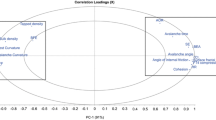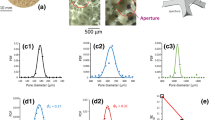Abstract
Aspirating and compressed-air foam systems incorporate proportioners or pumps designed to draw a sufficient rate of foam concentrate into the flowing stream of water. The selection of relevant piping follows from the engineering correlations linking the pressure loss with the flow rate of a concentrate, for specified temperature (usually 20°C) and pipe size. Undocumented reports exist in industry that such correlations are often inaccurate, resulting in the design of underperforming suppression systems. To illustrate the problem, we introduce two correlations, sourced from industry and developed for the same alcohol-resistant concentrate, which describe, respectively, effective viscosity and pressure loss as functions of flow rate and pipe diameter. We then investigate the internal consistency of each data set. We demonstrate that neither of the data sets displays internal consistency, and suggest possible errors in data processing and unit conversion that might have led to the observed discrepancies. We correct the original data to produce correlations that are internally consistent and are characterised by realistic rheology. We then investigate three other pressure-loss correlations (one for Newtonian and two for non-Newtonian concentrates), obtained from a different manufacturer, to demonstrate the widespread existence of inaccurate correlations in industry.















Similar content being viewed by others
References
E.C. Norman and A.C. Regina, “Alcohol Resistant Aqueous Film Forming Foam,” US Patent 4,999,119, 1991.
3M Light Water Products and Systems Engineering Manual, Fire Protection Systems, 3M Industrial Chemical Products Division, St. Paul, MN, USA, 1991.
B.Z. Dlugogorski, T.H. Schaefer, and E.M. Kennedy, “Friction Factors for Pipe Flow of Xanthan-Based Concentrates of Fire-Fighting Foams,” in: Proceedings 8th International Symposium on Fire Safety Science, Beijing, September 2005, pp. 707–718.
T.H. Schaefer, “Effect of Xanthan Gum on Performance of Synthetic Fire Fighting Foams and its Influence on Pumping of Foam Concentrates,” ME Thesis, The University of Newcastle, Australia, 2006.
R.P. Chhabra and J.F. Richardson, Non-Newtonian Flow in the Process Industries: Fundamentals and Engineering Applications, Butterworth-Heinemann, Oxford, 1999.
L. Jacobs, “Pressure Drop and Apparent Viscosity Calculations,” Personal Communication, 2005.
M. Marcotte, A.R.T. Hoshahili, and H.S. Ramaswamy, “Rheological Properties of Selected Hydrocolloids as a Function of Concentration and Temperature,” Food Research International, vol. 34, 2001, pp. 695–703.
A.H. Skelland, Non-Newtonian Flow and Heat Transfer, John Wiley & Sons, New York, 1967.
J. Korus, L. Juszczak, M. Witczak, and B. Achremowicz, “Influence of Selected Hydrocolloids on Triticale Starch Rheological Properties,” International Journal of Food Science and Technology, vol. 39, 2004, pp. 641–652.
A.B. Metzner and J.C. Reed, “Flow of Non-Newtonian Fluids—Correlation of the Laminar, Transition and Turbulent-Flow Regions,” AIChE J., vol. 1, 1955, pp. 434–440.
D.W. Dodge and A.B. Metzner, “Turbulent Flow of Non-Newtonian Systems,” AIChE J., vol. 5, 1959; pp. 189–204, note the erratum in AIChE J, vol. 8, 1962, p. 143.
M. Bobert, H. Persson, and B. Persson, “Foam Concentrates: Viscosity and Flow Characteristics,” Fire Technology, vol. 33, 1997, pp. 336–355.
ISO 7203-1, “Fire Extinguishing Media—Foam Concentrates: Specification of Low Expansion Foam Concentrates for Top Application to Water-Immiscible Liquids,” International Organization for Standardization, Genève, Switzerland, 1995.
D.V. Boger, “Viscoelastic Flow Through Contractions,” Ann. Rev. Fluid Mech., vol. 19, 1987, pp. 157–182.
Acknowledgments
The authors acknowledge the support of this work by 3M Company. We also thank Messrs Luc Jacobs of Solberg Scandinavian AS Norway, David Meyer of Orion Safety Australia as well as Henry Persson and Magnus Bobert of SP Sweden for stimulating discussions.
Author information
Authors and Affiliations
Corresponding author
Additional information
Part of this paper was presented at the 2005 Halon Option Technical Working Conference, held in Albuquerque, NM
Appendix
Appendix
The steady-state volumetric flow rate of time independent fluid in a pipe with no slip at the wall can be calculated from
where the last equality follows from the integration by parts. In Equation (A1), u denotes the local velocity.
Changing the variable of integration from velocity to shear stress using
(with the latter expression obtained from the force balance on a cylindrical element of fluid in pipe flow) yields the acclaimed Rabinowitsch-Mooney-Schofield equation [8]
Replacing Equation (1) into (A3) and integrating results in the so-called Buckingham equation for a power-law fluid [8]
Equation (A4) is obviously equivalent to Equation (3), with n′ and m′ defined in Equation (5), and the nominal shear rate at the wall in Equation (6).
Rights and permissions
About this article
Cite this article
Dlugogorski, B.Z., Schaefer, T.H. & Kennedy, E.M. Pressure-Loss Correlations for Designing Foam Proportioning Systems. Fire Technol 43, 123–144 (2007). https://doi.org/10.1007/s10694-006-0003-3
Published:
Issue Date:
DOI: https://doi.org/10.1007/s10694-006-0003-3




